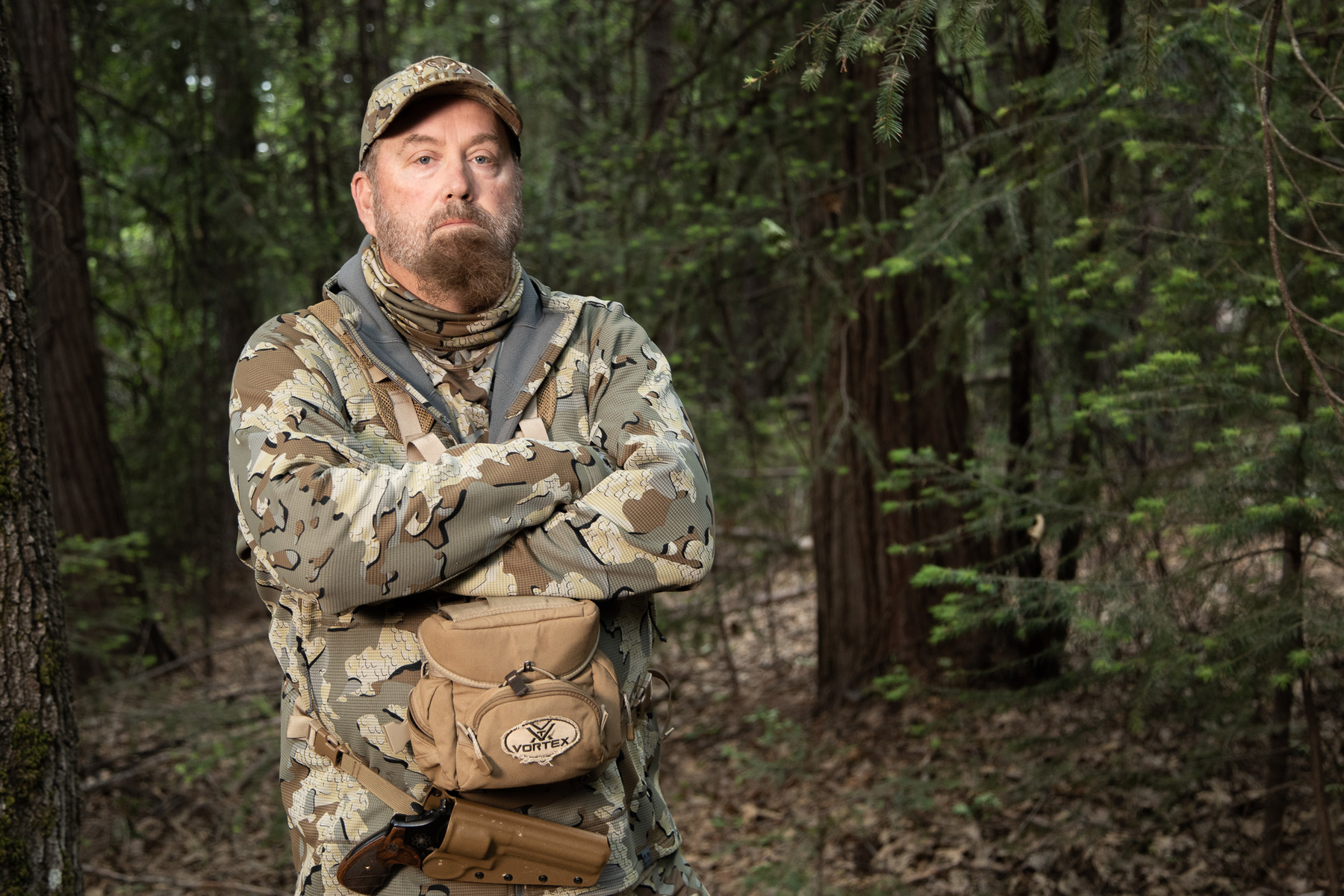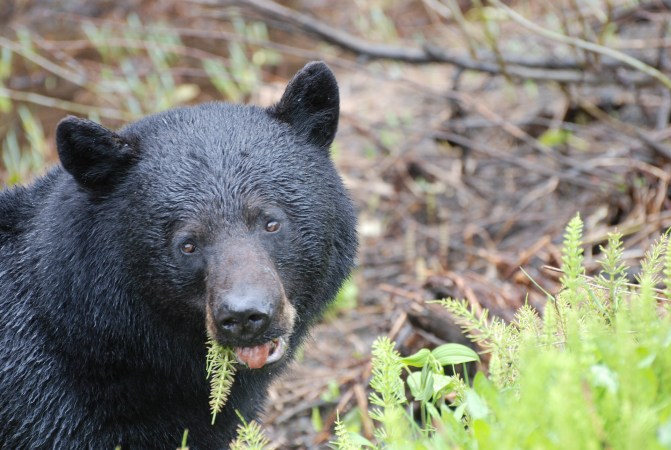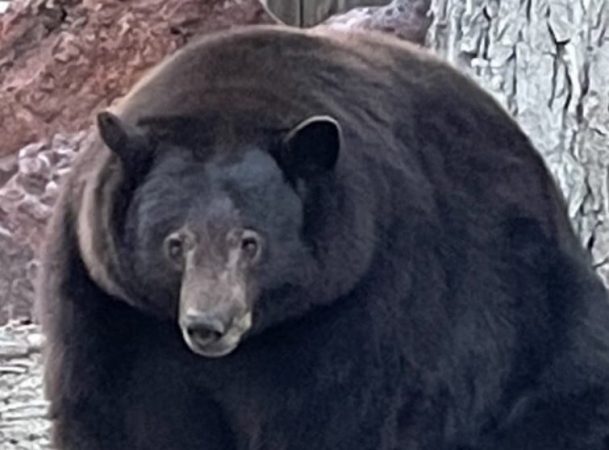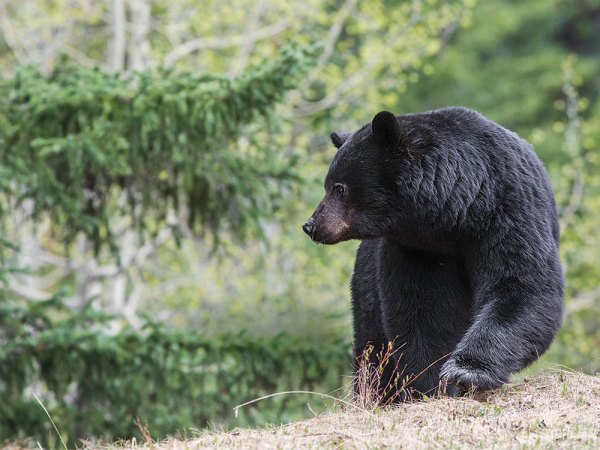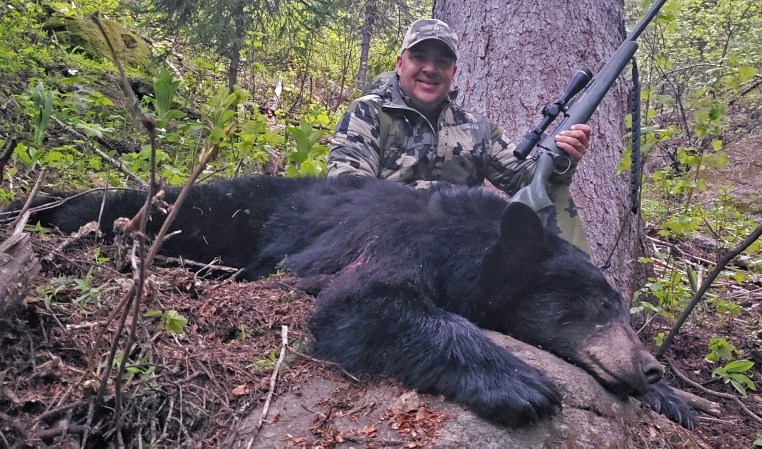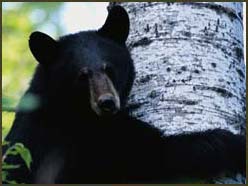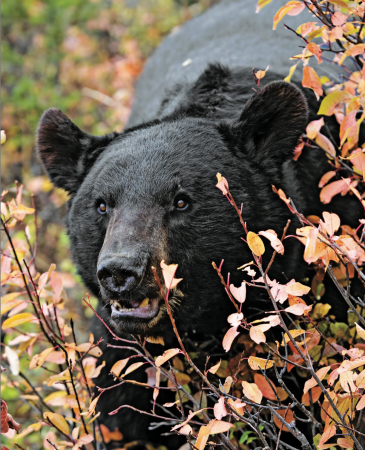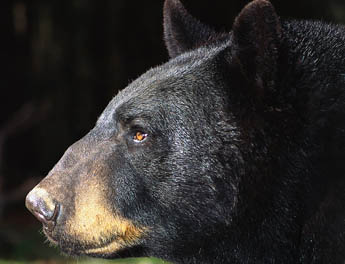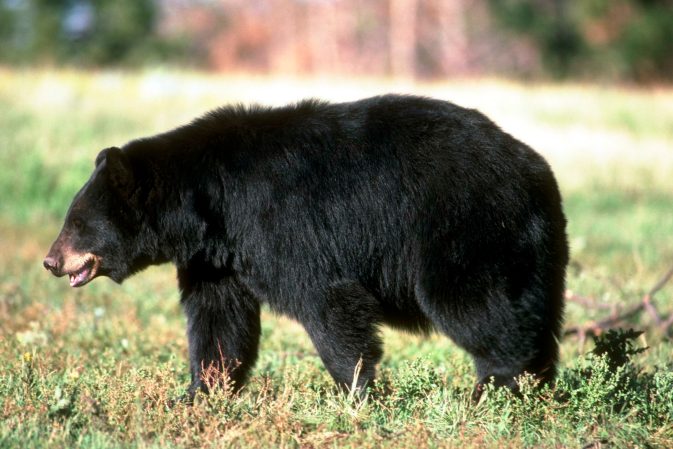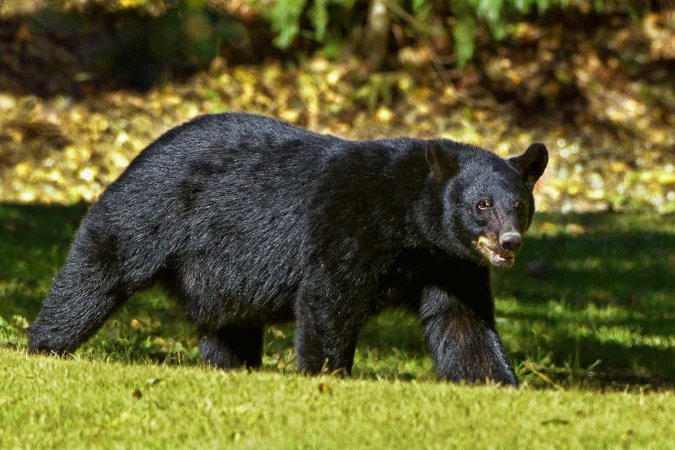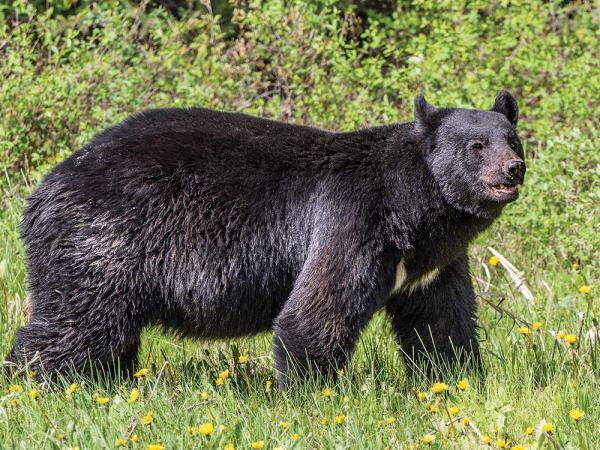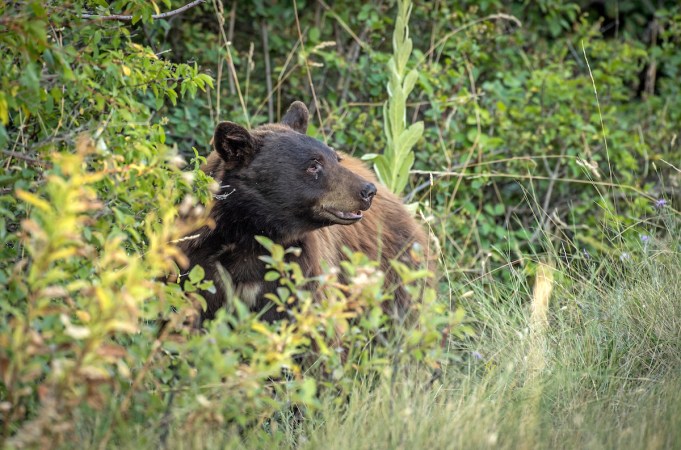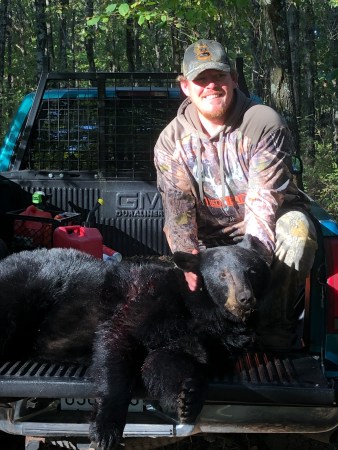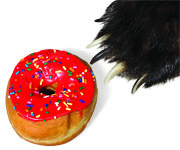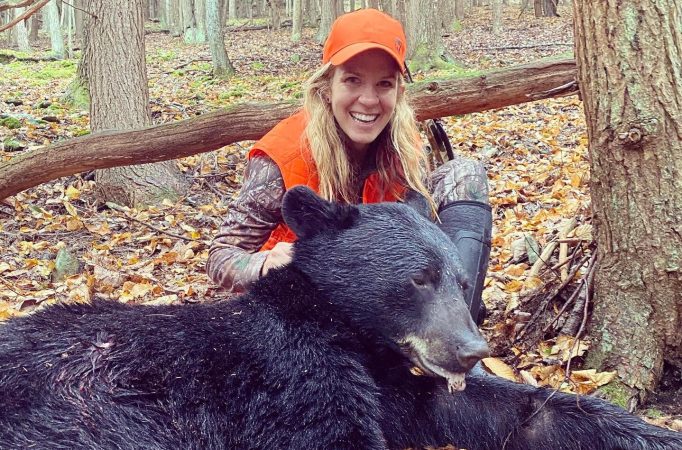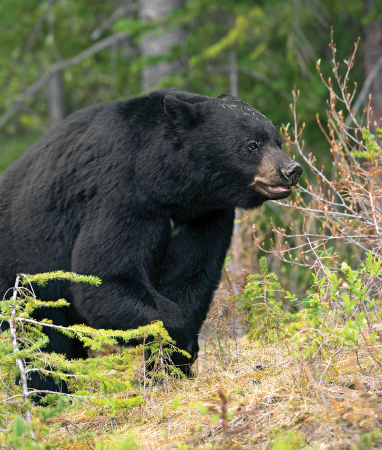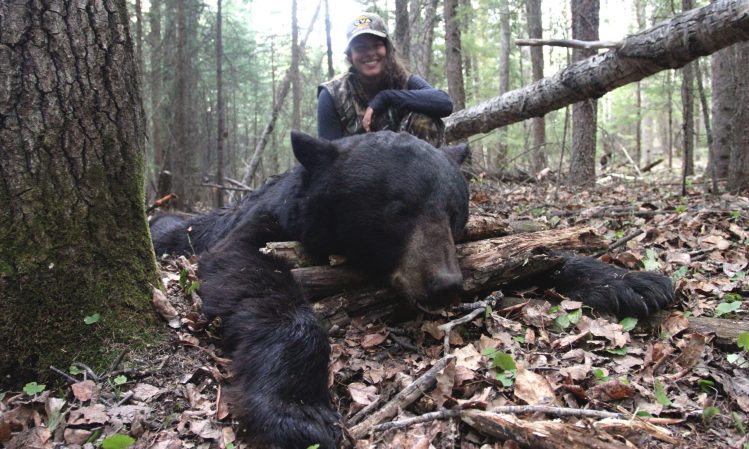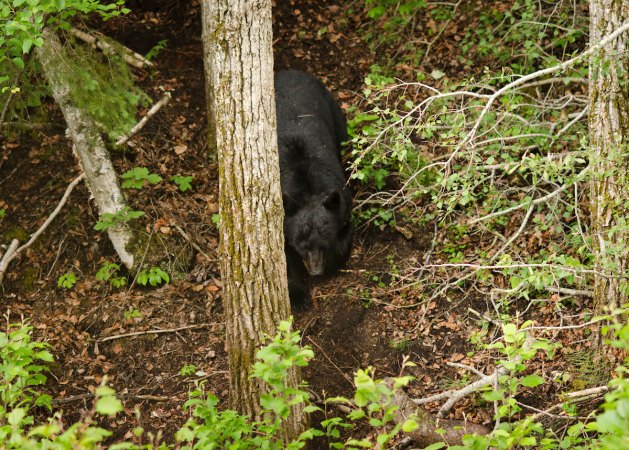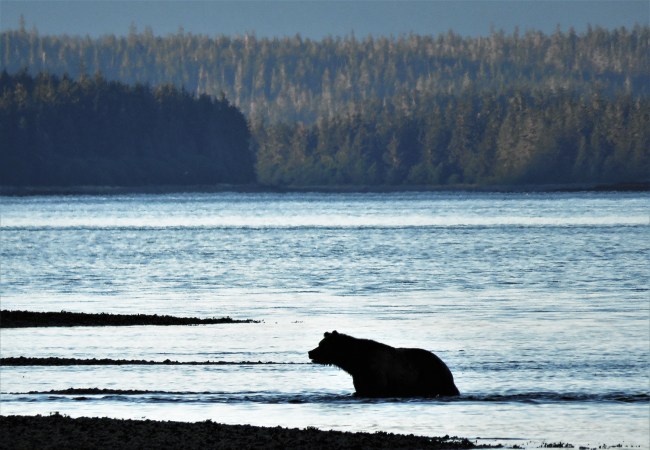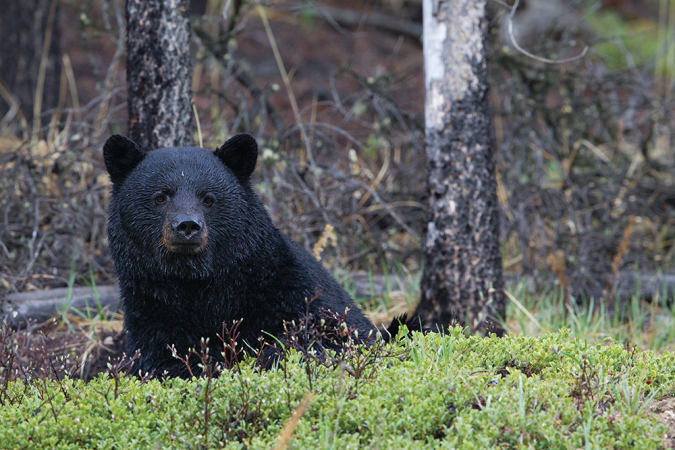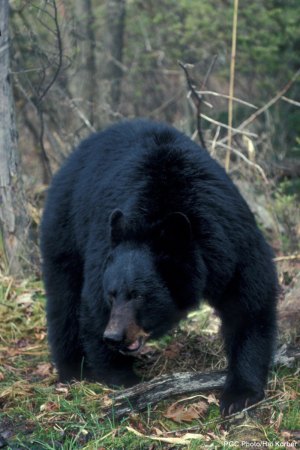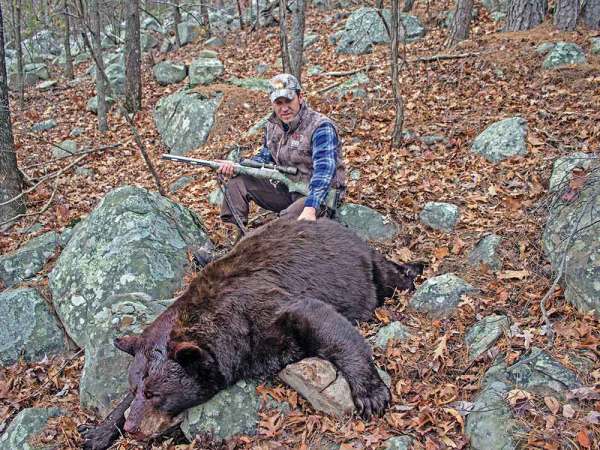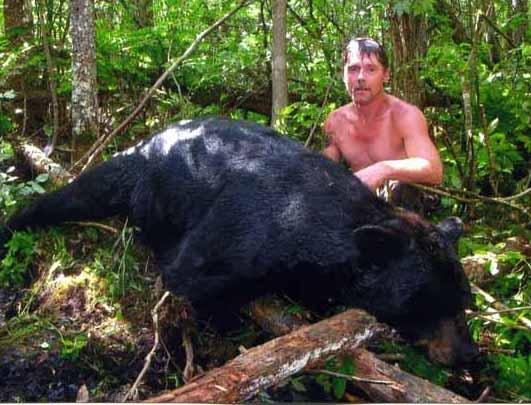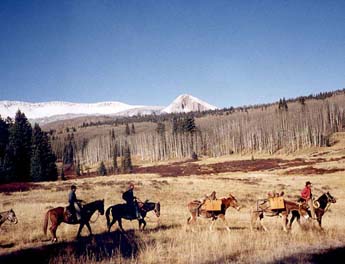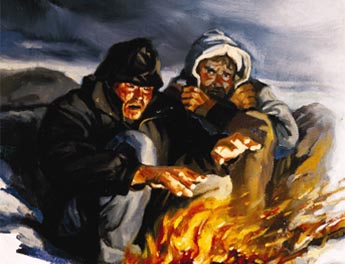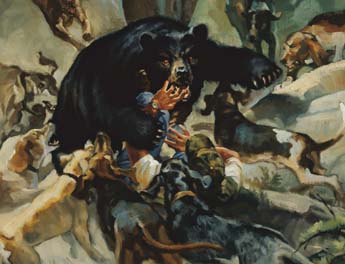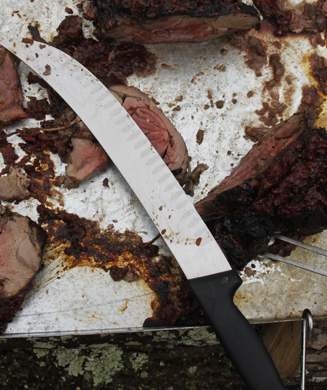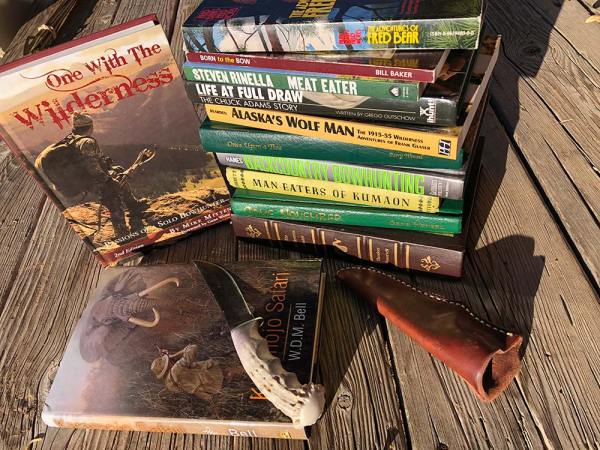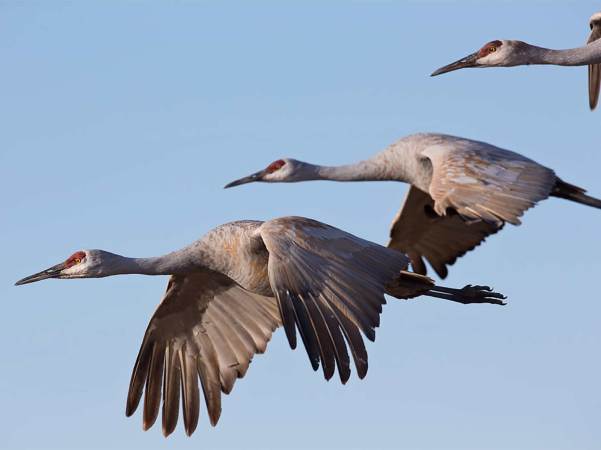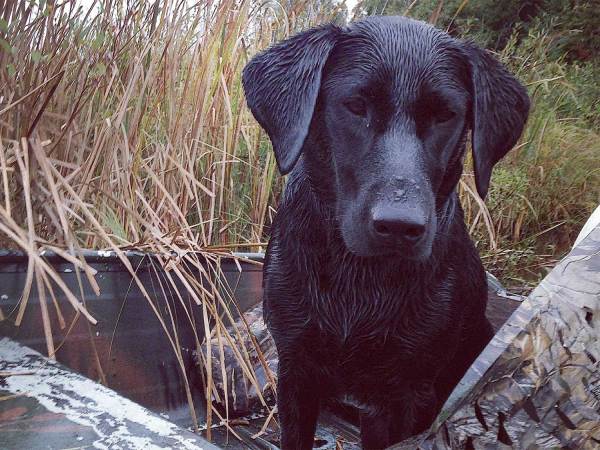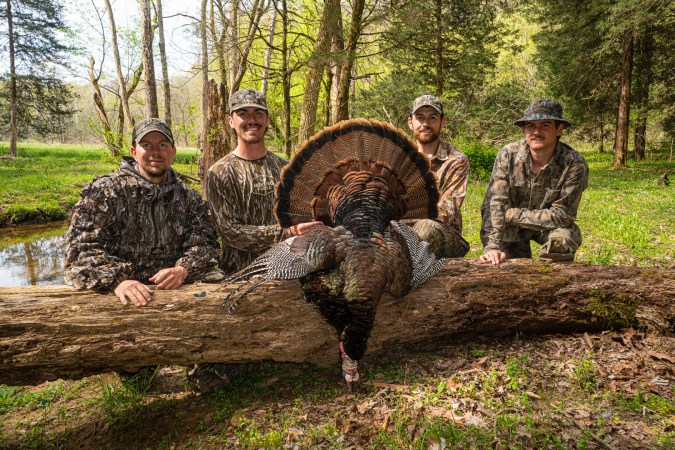Walking through some ordinary Northern California woods, near an ordinary cedar tree, Brian Kyncy suddenly stops. Leaning in close, he plucks a single blonde hair from the tree’s bark.
A bear has been through here. Soon, he spies claw marks on the bark of another tree, then faint prints, all of which was invisible to me until Kyncy points them out.
“I’m going to change the way you walk through the woods,” he tells me.
I hope he’s right.
Big Bri, as he is affectionately known, volunteered to spend two days with me in late spring rambling through the forests of far north California, looking to deliver the CliffsNotes of his more than 40 years of experience hunting bruins in the Golden State.
His motivation? Getting more people to hunt bears.
“I love bears. I also love that the good Lord put them on the Earth for us to harvest and manage as a renewable resource,” he says, succinctly explaining the North American Model of Wildlife Conservation while citing Genesis for his inspiration.
For 20-plus years, Kyncy has run a guide service in the Redding, Calif., area, specializing in bear, turkey, and fly fishing (he also spends his summers guiding anglers in Alaska). He grew up wandering nearby woods as a kid, and after spending 20 years in the corporate world in Minnesota, made his way back to California to help people—especially families, women, and children—learn to hunt.
He lives his code. Kyncy recently passed the day-to-day running of his guide business to his middle son, Nathaniel. His eldest son, Little Bri, also guides for the family business. Kyncy’s website observes that “Families that hunt, fish and pray together, stay together.” Each of his family members has the phrase “For True On Our Love” tattooed on them. It’s a reference to the family oath, the Kyncy way to double down on the veracity of a statement.
Lying when someone invoked the phrase was just about the worst thing you could do in the family, Kyncy’s kids told me.
Younger Hunters Will Help Control Populations
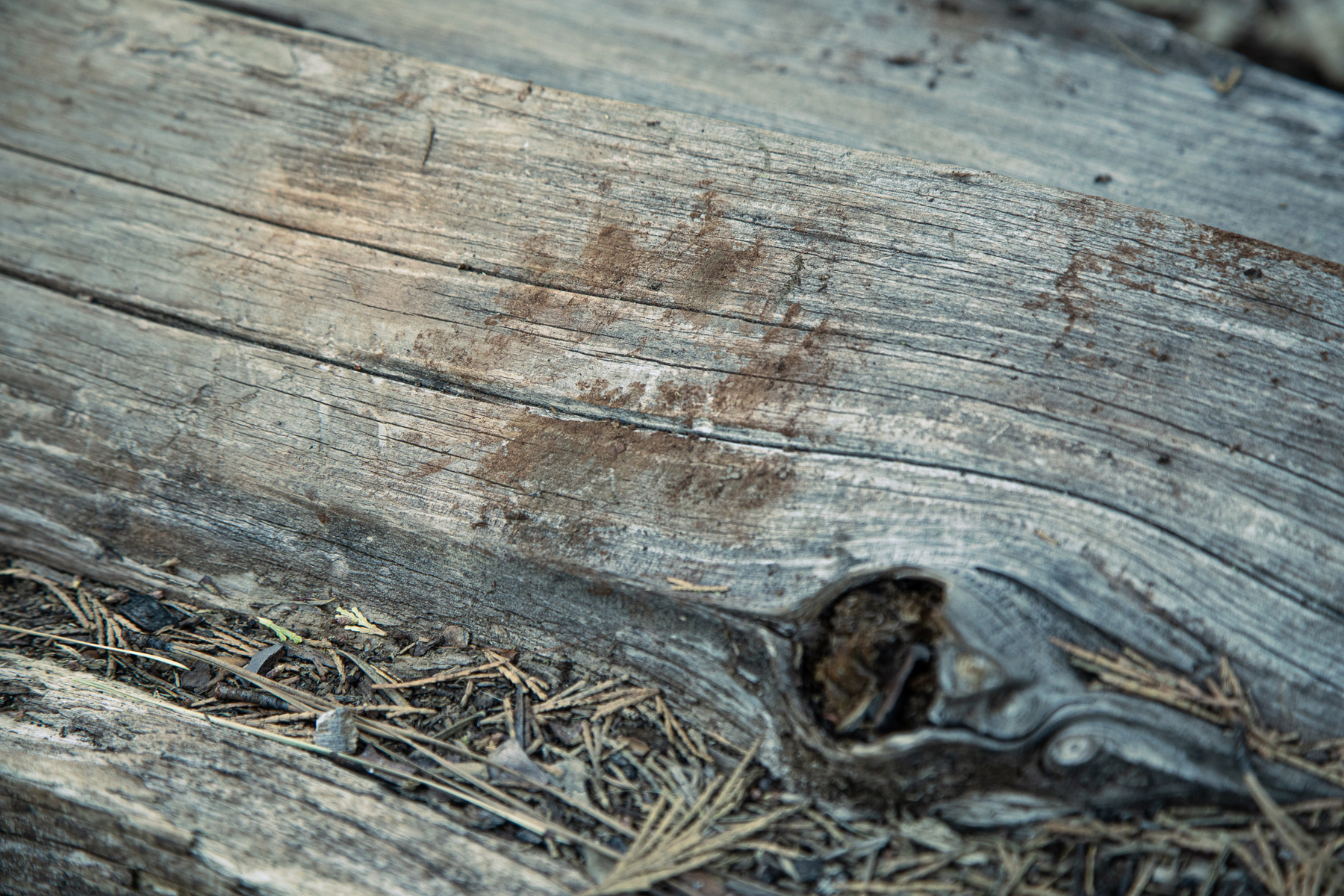
Kyncy says there are more bears now than he’s ever seen in these forests, and often they are smaller and less healthy looking. He worries that if younger hunters don’t take up the mantle of bear hunting, the pursuit will be soon lost.
“I’m trying to pass this down,” he says. “I feel like the last of the real bear hunters.”
Kyncy has reason for concern. California imposes a strict quota of 1,700 bears that can be killed in the state in its fall hunting season (it has no spring season). But ever since the state legislature voted in 2012 to ban the use of hounds for hunting bears, the state has not come anywhere close to reaching that number. The total take in 2020, for example, was 919 animals.
The population of bears in the state has increased dramatically. Conservative estimates suggest that there are 30,000 to 40,000 animals now, up from the estimated 10,000 to 15,000 in the early 1980s.
More worrisome, in January, a California state senator introduced a bill to completely ban bear hunting. Swift opposition from hunting groups, coupled with other pressing issues like the state’s response to the COVID-19 pandemic, ended shelving the bill for the 2021 legislative session, but few in the hunting world—including Kyncy—believe it is the last time the state will try.
“If you love bears and care about bears, a bear hunting ban is the worst thing we could do for bears,” he says. “When Fish and Game have to euthanize problem bears, they don’t eat the meat or take the hide. It’s a disrespect to the animal.”
An hour or two into our first day’s walk, Kyncy surprises me with a pop quiz.
“Point me out a bear sign, old or new,” he kindly orders, pausing suddenly at a confluence of human and game trails.
Flummoxed, I look down for prints, then search the nearby trees for something. Finally, I spy a thin tree that’s been suspiciously pruned about seven feet up. I sheepishly point at the chewed pine, hoping to please my teacher.
“Good,” he says. I passed the test.
Bears will often chew the tops of saplings to show dominance, and during our walks Kyncy would frequently point out examples. Even though the sign was old, I felt relieved that I had succeeded in identifying a bear sign that a day ago would have been indiscernible to me.
Kyncy says that as he walks through the forest his head is constantly “ping ponging” looking at “good food, bad trees, looking down, and listening.” Sugar pines are “bad” trees that bears tend to avoid, while Ponderosa pines and cedar are good trees that bears like to scratch rub against, and chew the tops of.
Good food means understanding what and where bears will be eating throughout the year. Here, he notes an abundance of manzanita berries developing alongside the trail. Those will be great food for bears in a month or two, he explains, but likely won’t be around when the hunting season kicks off, except perhaps for early archery.
The manzanita berries are a clue as to where bears might be at a particular point in time, he says, but it’s crucial for a hunter to know what food sources are nearby that a bear might rely on in fall. Oaks dropping acorns are an obvious win (though the same oaks won’t produce every year), as are the apple and pear trees that dot old, abandoned homesteads in the area. These food sources obviously vary by location. Available fall forage in Northern California will be different from the high Sierras, and different again in Central and Southern California.
Finally, Kyncy is looking ahead for tracks and listening for certain critters sounding off, which can tell him if a predator like a bear is nearby. Blue jays squawk at just about anything walking by, and bushy tree squirrels constantly chatter, but Douglas squirrels (Kyncy refers to them as “piney squirrels”) often call out when a predator like a bear or mountain lion is near.
“These little piney are squirrels my assistant guides,” Kyncy says. “I’ve killed more bears with my clients because of them than anything else.”
Binos in One Hand, .44 Magnum in the Other
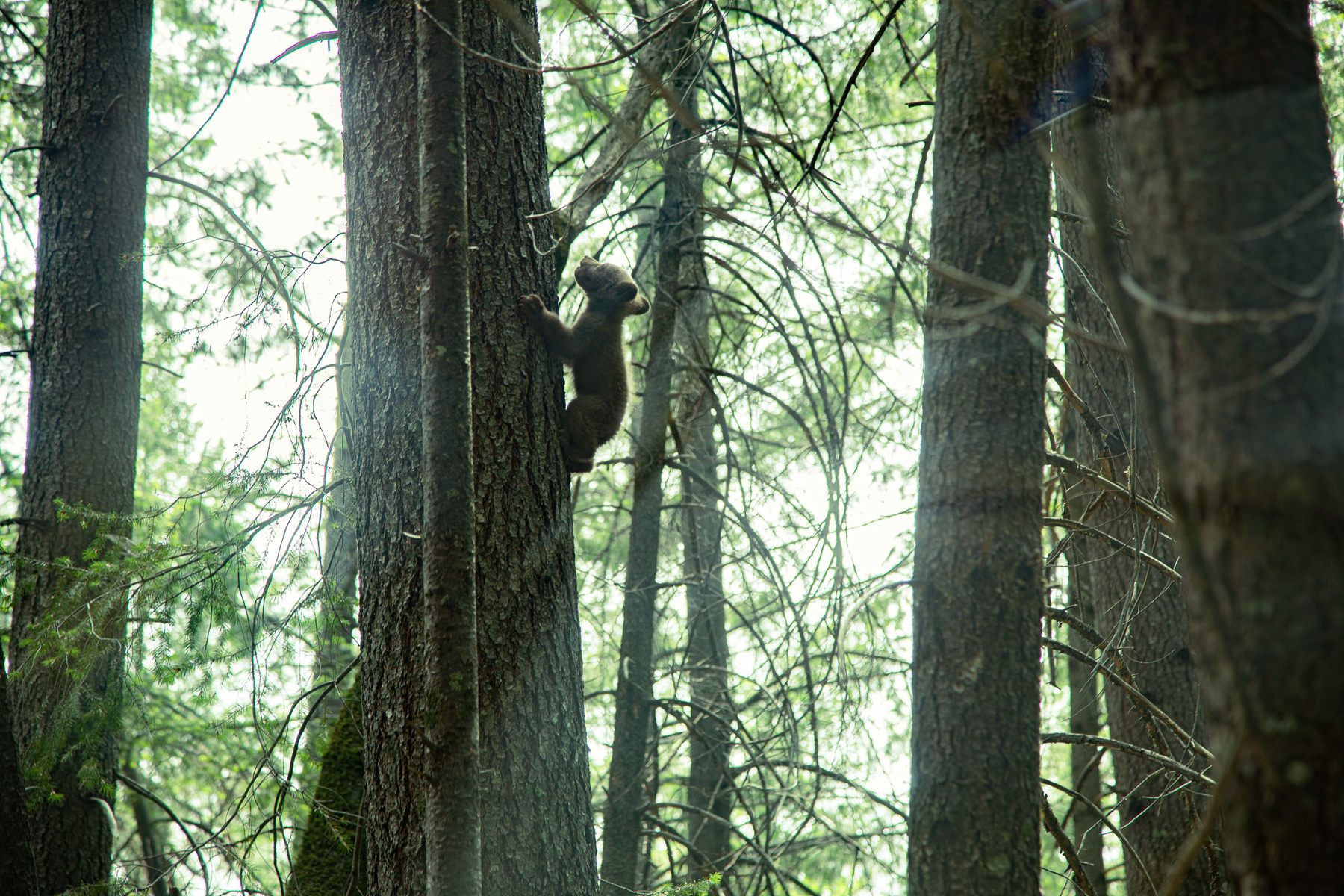
As we walk through the forest, Big Bri occasionally puffs a wind checker to assess the thermals. In Kyncy’s judgment, scent is the number one consideration when hunting bears in California. He recommends to his clients a rigorous, week-long regiment of eliminating scent from clothes and the person, and then using local, natural cover scent while out in the field. He sets his clients up in ground blinds to aid concealment and scent control. To Kyncy, if you stink up an area by giving away your smell for any meaningful period of time, you might as well leave the forest for the day. The bears are that spooky.
Kyncy leads me to a large guzzler just a few hundred yards from a forest road. As we approach, we see a puddle on the apron and muddy bear prints leading away. It looks like we just missed a bear.
Given the generally warm temperatures in the state, Kyncy tells me that bears consistently seek out wallows to cool off in. Importantly, bears are cautious when moving towards a feature like a wallow. Instead of moving in a straight line directly toward their goal, bears will make a half or full circle to sus out any danger. Keeping wind at your flanks is even better than wind in your face in these situations, Kyncy says.
As we bump down a dirt forest road in Kyncy’s Tundra crew cab, a white Tesla Model Y comes into view. Kyncy doesn’t know what kind of car it is, and when I tell him it’s a Tesla he figures they are lost, trying to visit a waterfall we had passed by earlier. The spot once was a local secret but had been blown up by an article in an outdoor publication.
Even before the pandemic, this once quiet corner of California was becoming inundated with outsiders. The past year has only doubled down on the trend, Kyncy says.
Or maybe the Tesla is on its way to the same place we are. But a couple hundred yards later the Tesla turns around. We slow, thinking they may pause to roll down a window and ask for help, but they don’t engage.
Later, Kyncy takes me to another area to check out an old orchard hidden in the forest. He tells me that many guides enforce the familiar early morning or just before sundown recipe for hunting bears. In Kyncy’s estimation, 90 to 95 percent of bears are nocturnal during hunting season here, but they will often leave their beds for that afternoon water break. If his hunters are up to it, and the wind cooperates, he recommends they stick to their ground blind throughout the middle of the day, as a bear may just head for a drink or wallow when it’s least expected.
It doesn’t take long for us to find bears out in the middle of the day, just like Kyncy predicted. As we drive, a small bear on the road immediately bolts up a thick, steep embankment. Little Brian’s dog, Steelie, who is traveling with us, charges up the hill, fascinated. But the bear is gone before we know it.
Not much later, we spook a sow and her two cubs. The cubs scatter into nearby trees, and momma bear is nowhere to be found. Kyncy hops out of the truck, binoculars in one hand and .44 Magnum revolver in the other, alternatively making bear sounds and gently calling out in English, “momma, don’t worry momma.” We scan for her, but she doesn’t appear, and quickly we move on to let the cubs reunite with their guardian.
Bear Hunting in California Is a Challenge
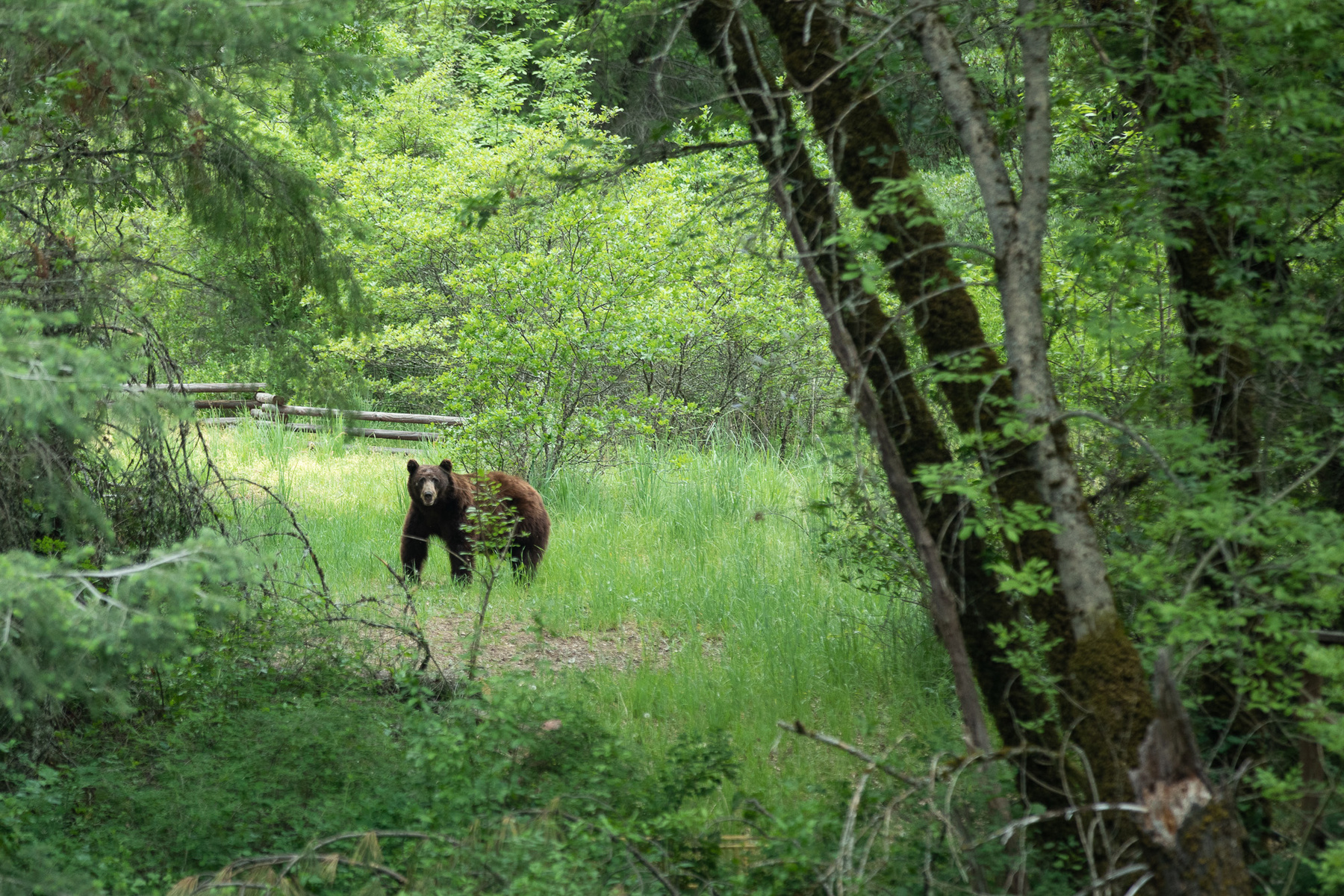
Despite these easy sightings, what I learn most of all is that hunting bears in California is hard. Really hard.
“Bears are the smartest North American game mammal we have, and I’ve hunted them all,” he says. He considers bears smarter than the cleverest dog. They have noses that can pick out any incongruency (one of Kyncy’s favorite words when talking bear hunting) and can see and hear about as well as we can. Just as we try to pattern bears, bears pattern humans, Kyncy explains. That’s what makes the hunts so iffy.
I ask Kyncy why a person might want to hunt a bear in California if it’s so difficult.
His answer is that learning to hunt bears is like becoming proficient at golf or bowling. “It’s rewarding to work so hard and do the due diligence and put the effort in to see everything come together,” he explains, hoping that a new generation of hunters will take up his passion and put in the time to learn the intricacies of hunting bear on the bear’s terms.
We tour the orchard and meadow, looking for signs. Later in the year, as the fruit and then acorns pop off, the area will be filled with piles of bear scat, Kyncy says. Right now, it’s still early in the year and the signs are more subtle—rubs with hair, claw marks on certain trees, saplings chewed.
Kyncy tells me that once you see some signs the most important question is to ask the bear, “Why are you telling all the other bears this is your spot?” That will clue the hunter into how the bears are using the landscape and therefore how to potentially set up for a hunt.
Kyncy leads me to some bear beds he knows about from previous scouting trips. They are on a northern slope, just a few hundred yards from the bounty of the orchard. Kyncy says it’s common for bears to bed on a northern slope and feed on a southern slope, especially when there’s water in between.
These beds are the homes of the big bears who have earned the right to live so close to a food source, he explains. A bear’s bed often lies behind a large, downslope tree. It will show a characteristic deep trough that is more funnel-shaped than a deer bed. To hunt the biggest, baddest bears in California, you often have to figure out how to still hunt them on their beds, since you’re not likely to catch them out and about during shooting hours, he explains.
Parked by a stream next to the orchard, we grill some sausages on a little hibachi for lunch, wash it down with a beer, and then begin our long trek back to Kyncy’s house.
As we drive out of the national forest, bobbing down another dirt road, I spot a large cinnamon bear on the opposite side of the creek we are paralleling. Kyncy immediately throws the truck in reverse, and we pause to observe the animal. It’s at least 275 pounds, Kyncy says. The bear looks out at us from a few hundred yards away, relaxed and curious.
Seeing this last bear, a shooter for sure, is a fitting end to the trip. As the bear melts back into the forest, I say to myself, “See you again this fall.” I have Big Bri’s bear hunting brains on my side now.
